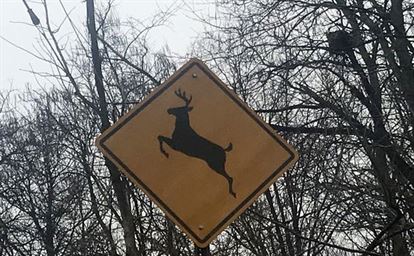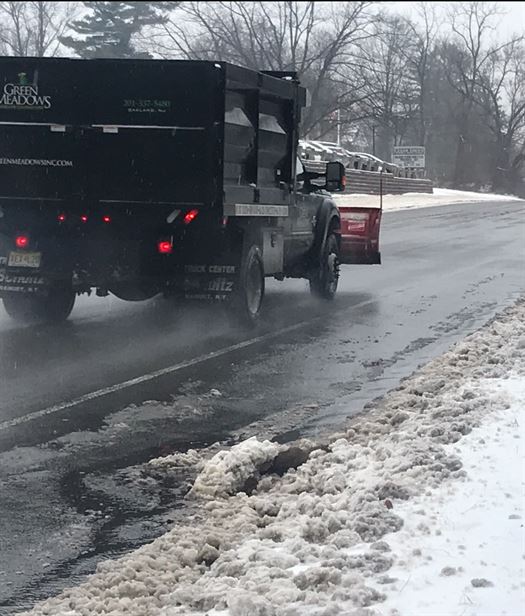It is fairly common for one to come across roadkill or even a vehicle being hit by a deer at Montclair State University.
“The deer population across New Jersey is higher than average this year,” said Capt. Kieran Barrett from the University Police Department. “As such and as sometimes their habitats are developed, they do tend to wander into less safe areas for them.”
According to usnews.org, Montclair State is known as a commuter school with over 73 percent of the student body population owning a vehicle which they use on their daily commute. This combined with the campus’ 252 acres of land makes the outcome of hitting deer common.
A deer was killed on the corner of Ridge Road and Reservoir Drive near Montclair State on Feb. 7. The animal became unrecognizable after being left on the side of the road for several days and being buried by snow. It was only until several days after its death that the deer was removed from the premises.
Last semester on Nov. 14, 2017, a dead deer lying on the side of the road on Clove Road across from Sinatra Hall caused major traffic for bus shuttles and drivers.
Barrett confirmed that incidents related to cars striking a deer are relatively low and are normally not on campus roads but rather on adjacent roads such as Clove Road and Valley Road.
However, this does not mean that accidents do not occur on campus.
Students, such as junior biology major Will Serrano, have faced this situation.
“It was just one deer that was hiding in between the cars, and it just jumped out of nowhere,” Serrano said. “It scratched my car. I believe I broke the deer’s left leg, but it was very much alive.”
The incident between Serrano and the deer occurred on Upper Mountain Ave near Whole Foods Market this semester. When Serrano was questioned why he thought deer randomly jump onto busy streets, he jokingly said that the deer probably have a small IQ.
Senior computer science major Ismail Belmouh was scared half to death after hitting a couple of deer near Yogi Berra Stadium after his soccer practice.
“It all happened so fast,” Belmouh said. “I was casually driving one moment and the next two deer slammed my car right in front of me. I hit them, and they fell down but got up.”
Many students have had close encounters with deer and have addressed their concerns on the roadkill that they have seen, such as senior biology major Emily Cruz.
“Animals are important whether they’re dead or alive,” Cruz said. “Everyone has to do something to raise awareness because this can’t keep happening each semester.”
Cruz suggested the university should start a wildlife protection society group on campus and to make announcements notifying students to be cautious when driving.
Many incidents of deer hitting go unreported and Barrett said an estimated average of 3-4 occurrences are reported in a year.
“As mentioned largely, we have people that hit a deer and continue on, and then we might receive a call that there is an injured deer on a roadway,” Barrett said.
When asked to address the lack of deer caution signs, Barrett agreed that signage may help the situation. However, his biggest concern comes from the attentive driving conditions on the roadways.
“Using technology while driving only adds to the problem,” Barrett said. “As you can imagine nobody can control the actions of the deer.”





